Creative advertising students win two of 10 Communication Arts student awards given worldwide
The Newhouse School ranked as the second most awarded school internationally in the Communication Arts Advertising Annual 62, winning two out of the 10 student awards given and five Shortlists.
“The students at Newhouse continue to impress,” said alumnus Dan Lucey ’99, chief creative officer at Havas in New York City. “They consistently demonstrate clear and powerful thinking that translates into brand activations, social media executions, mobile apps, experiential, new technology integrations, out-of-home advertising and print.”
The winning campaigns were created in the creative advertising portfolio courses taught by professors of practice Kevin O’Neill and Mel White. Sam Luo, who created three of the winning campaigns, said the experience and mentorship of his professors helped him succeed both in and out of the classroom
“They both are so experienced in guiding students and young creatives into landing the best work of their lives,” Luo said. “They are very patient but give direct, honest feedback each round. They are not afraid to push students into becoming better craftsmen in the creative advertising field.”
The portfolio courses are designed to mirror the intensity of the creative advertising industry. Entering in competitions like the Communication Arts Advertising Annual awards helps students’ portfolios stand out when applying for jobs and internships.
“The advertising industry is a very competitive business, the creative end especially so,” O’Neill said. “Contending for awards in publications like Communication Arts hones our students’ competitive instincts and drives them to ever higher standards of excellence.”
“The students work hard in their creative advertising courses to create compelling ad campaigns, and these Communication Arts Advertising Awards and Shortlist Awards are an excellent outcome of that. The advertising industry has communicated that these students create award-winning work. And this goes a long way when interviewing for jobs.”
The two award winners in the Communication Arts Advertising Annual 62 were “Jeep Views,” created by Mike Gaines, and “McDelivery,” created by Luo. The campaigns are shown in the most recent November/December print and digital editions of Communications Arts’ international publication.
“Both projects demonstrate a strategic understanding of the brand, brand assets and the need for simple communication in an era when we are dividing our attention between multiple screens,” Lucey said.
Gaines wanted to create a campaign that spoke to Jeep’s ruggedness and functionality.
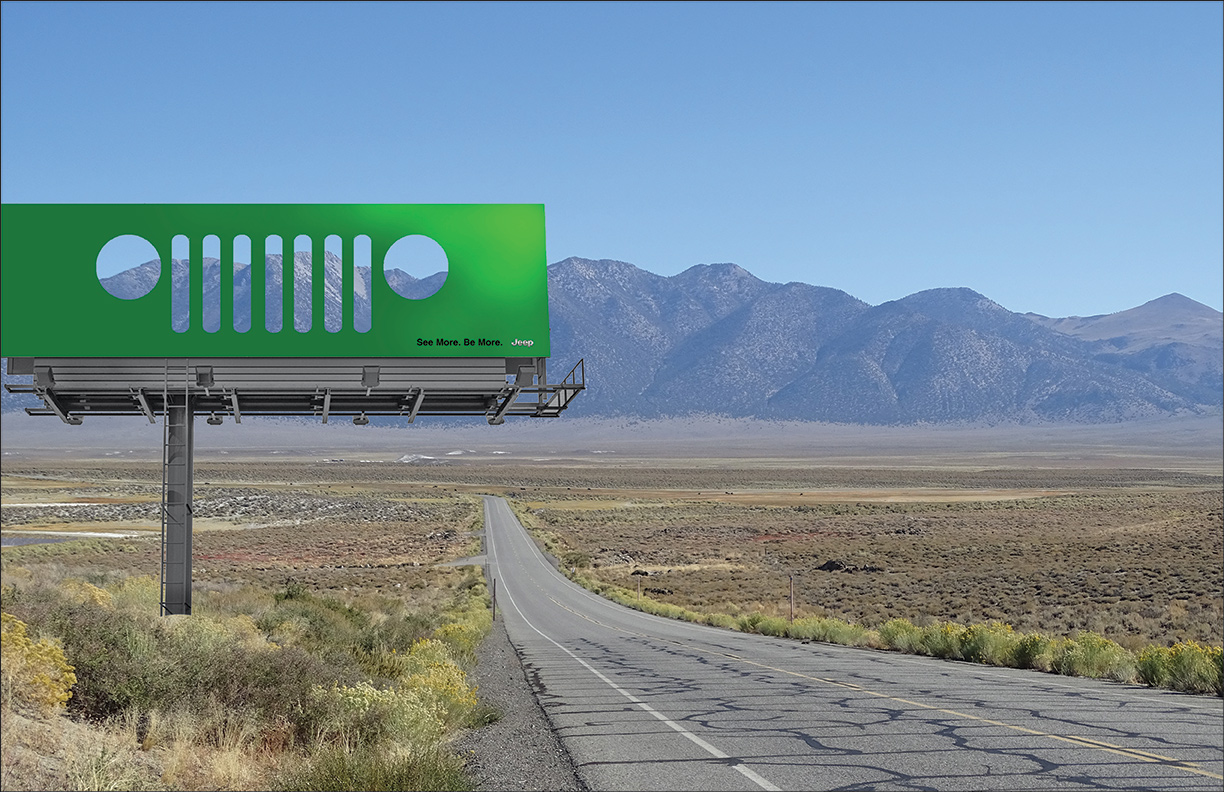
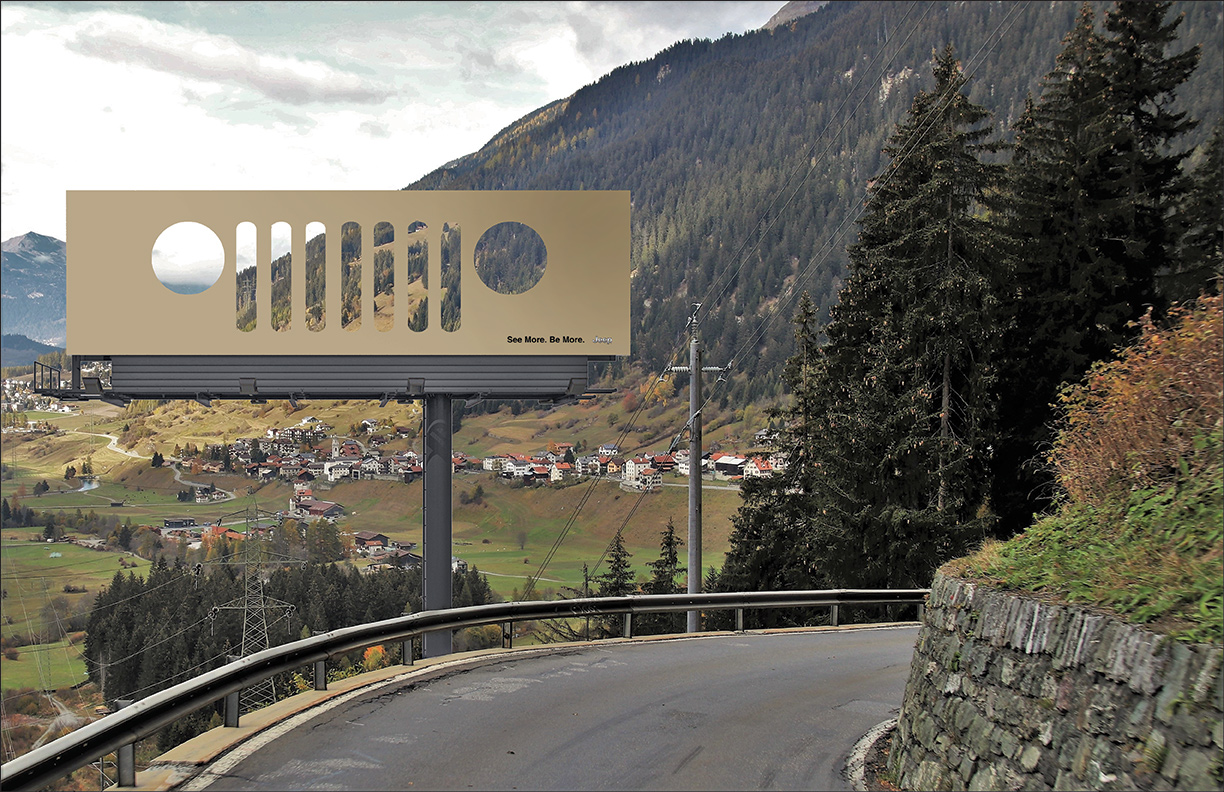
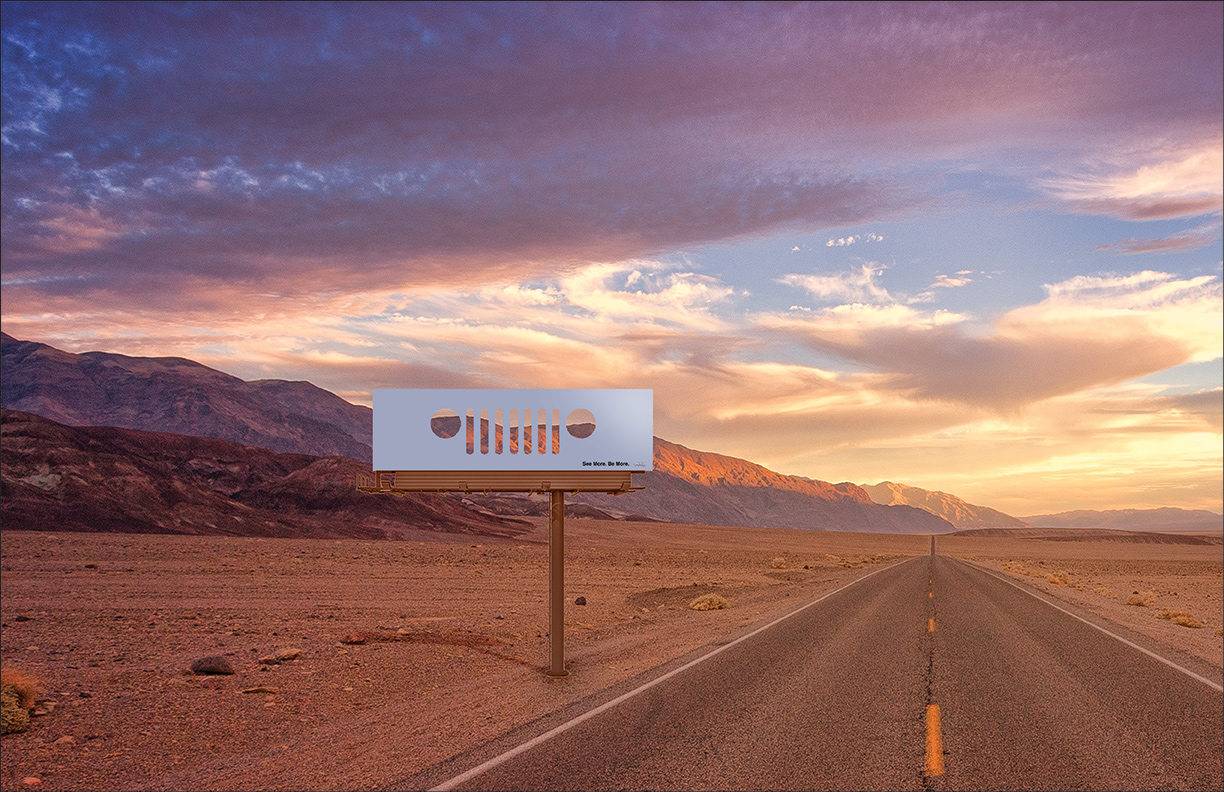
“To Jeep owners, their vehicles are far more than just cars. They are a way of exploring and experiencing places previously unimaginable,” Gaines said.
One of Gaines biggest challenges was simply communicating Jeep’s ability to unlock new experiences for owners and drivers while keeping the company’s branding at the forefront. In Gaines’ campaign, Jeep’s signature grill became framing cutouts in billboards and print ads. Mountainous, snow-capped and desert landscapes peek through the grills ready to be explored behind the wheel of a Jeep.
For Gaines, the award affirmed he’d chosen the right career path. “It feels amazing to have my hard work, dedication and creativity celebrated by such a prestigious advertising competition. Even being considered in the running among so many other young creatives was an accomplishment to me,” he said.
Art director Luo won the other Communication Arts Advertising Annual award for his “McDelivery” campaign for McDonald’s. Luo wanted his campaign to highlight McDonald’s delivery service while fitting with the company’s signature brand.

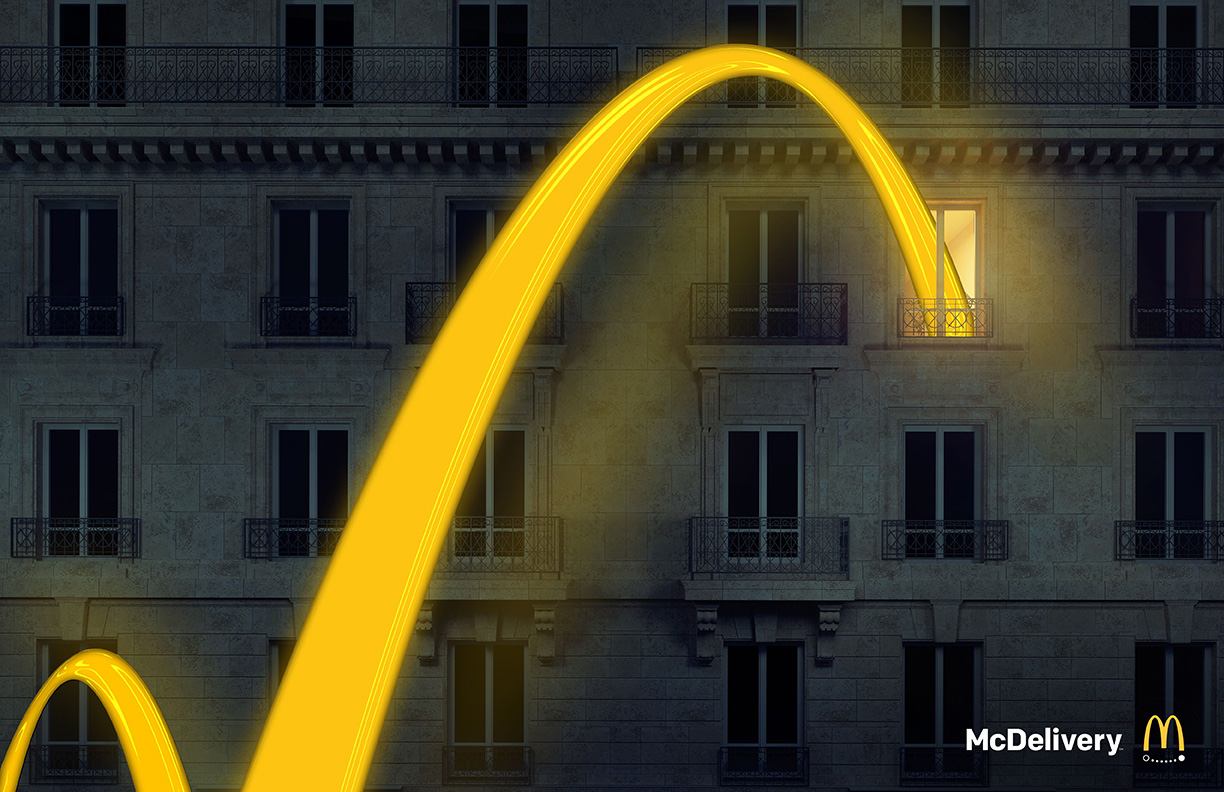
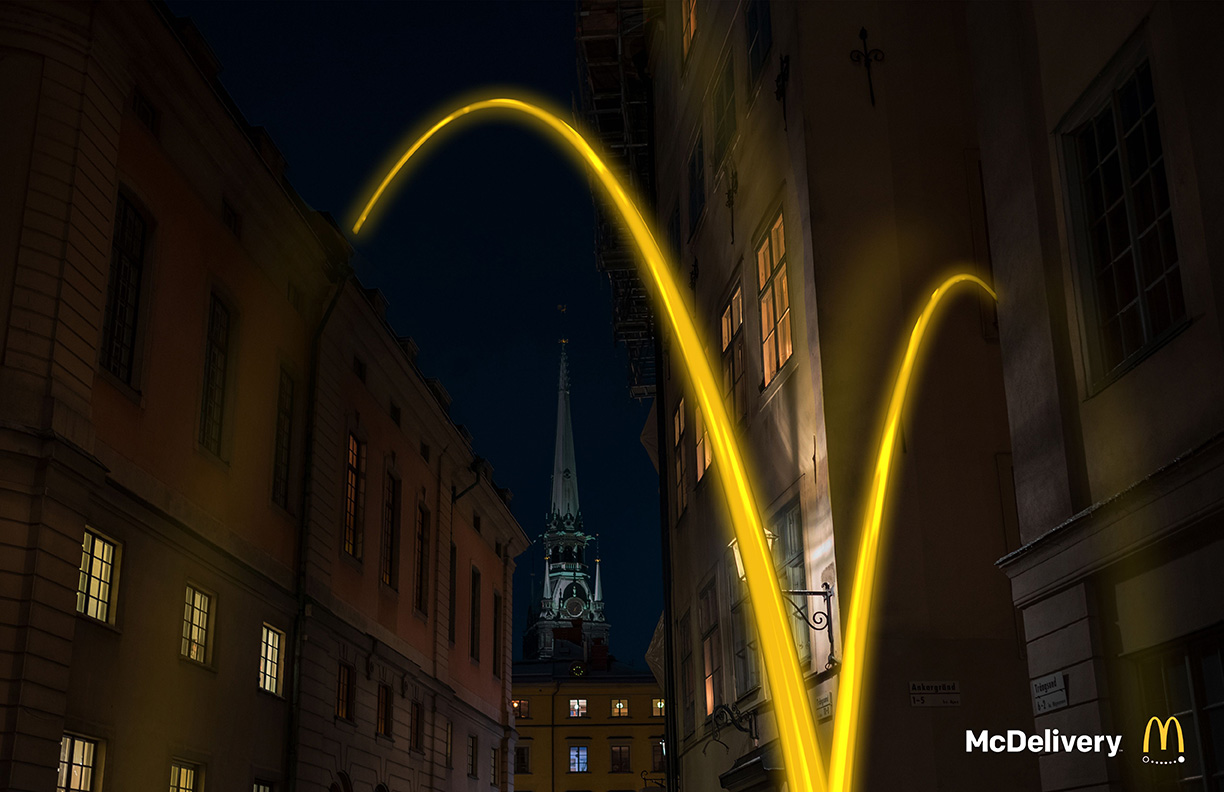
“I just have seen so many well-done, iconic McDonald’s campaigns over the years. Their brand voice is so clear and easy to understand,” Luo said.
Luo focused on the insight that McDonald’s has one of the most comprehensive fast food delivery services worldwide, making it easy for customers to order their favorite meals. From there, Luo turned to his pencil to visually brainstorm his concept, using McDonald’s distinct branding as a guide.
“Writing down every nugget of an idea is crucial because that may build over time and spark even more thoughts,” Luo said. “Usually at that phase, I draw a lot of stuff and pick about a dozen ideas to further develop.”
To illustrate the company’s delivery service, Luo developed a print campaign featuring McDonald’s arches glowing in the night as they bounce off city streets into apartment windows. While the art direction came clearly to him, Luo said figuring out how to physically achieve his vision was challenging.
“The execution took a really long time,” he said. “I tried different ways to bring the iconic golden arches to life, and in the end I landed on 3-D renderings, which took a while to figure out.”
“This award is one of the hardest awards to win in the industry because they give out such a limited amount,” he said. “Also the judges are really high-level creative directors and even executive creative directors, so having their support means the world.”
Five Newhouse creative advertising student campaigns earned Communication Arts Advertising Shortlist awards.
Luo and partner copywriter Grace Curran worked on the shortlisted campaign “On Hold” (video) for WhatsApp, which focused on mental health. This integrated campaign addressed the high depression and anxiety levels among Generation Z and their connection to social media.


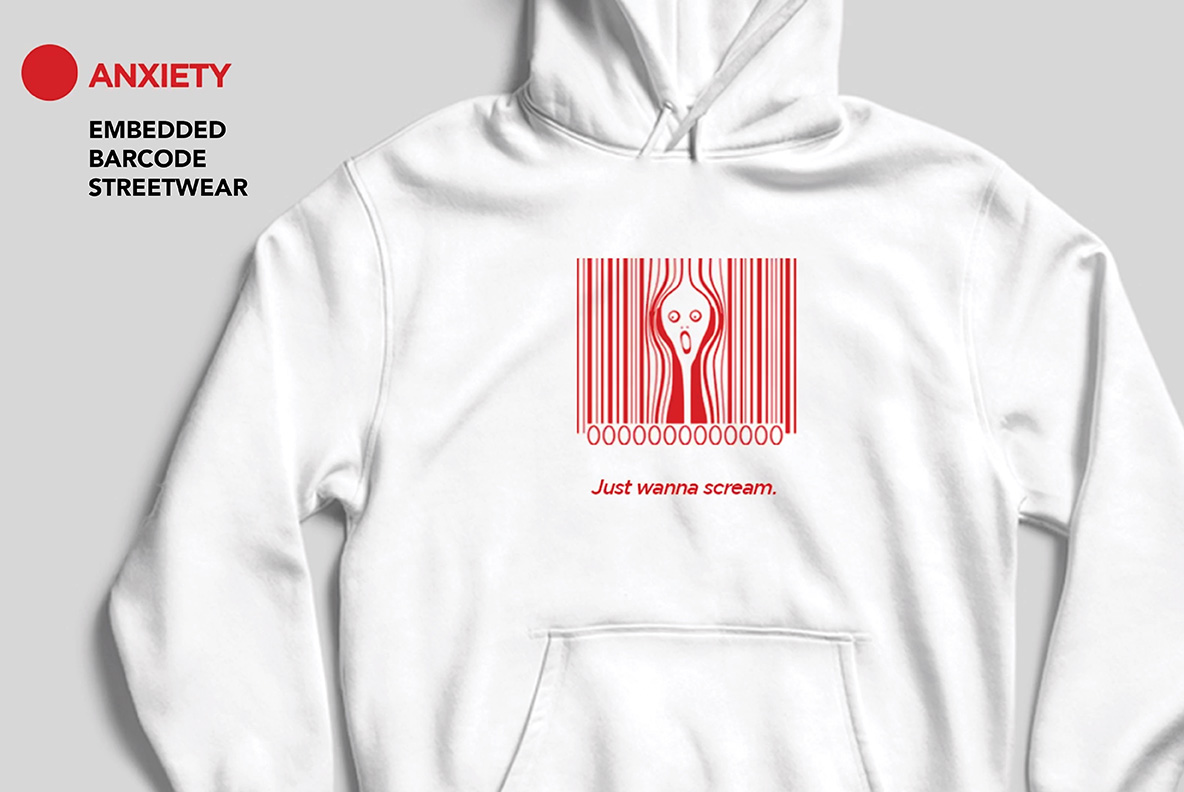
“Sam and I were inspired by our own experiences as members of Gen Z,” Curran said. “We had a lot of discussions about anxiety and mental health as a whole and agreed that being tied to our phones was a root cause for many of the mental challenges we faced on an everyday basis.”
Luo and Curran decided to do the unexpected and turn to the technology in their phones for inspiration. “Obviously, it seems counterintuitive for a phone app like WhatsApp to tell people to take time away from their phones, but that’s what we liked about it,” Curran said. “It’s not only provocative, but also shows that they care and that, sure, sometimes what’s going on digitally is important, but what’s going on mentally is always going to be more important.”
“On Hold” uses mental health check-ins through facial recognition scans, signal-blocking “On Hold” towers and automatic away messages to help users who feel overwhelmed and anxious. The campaign also included streetwear printed with barcodes that, when scanned with a phone’s camera, took users to the WhatsApp On Hold app to find mental health support. Curran said Professor White and the team’s mentor Grant Mason, creative at Wieden+Kennedy in NYC at that time, encouraged them to create a fully integrated idea and stretch it as much as possible.
“We were always taught to think big and to make our campaigns flow seamlessly, and mimicking shutting off our personal devices on a larger scale was definitely something we saw as a seamless strategic activation,” Curran said.
“PAL: Protect Asian Lives” (video), created by art director Rachel Hayashi and copywriter Jessica Mastorides for Apple, was shortlisted.The pair received a brief to use new technology to address a real world problem. Hayashi and Mastorides’searched for an issue they both felt passionate about, which led to the creation of PAL, a campaign designed to address the sharp rise in violent anti-Asian hate crimes during the COVID-19 pandemic, specifically the many unreported crimes.



“With a lot of these hateful incidents and violence against Asian Americans, unfortunately, a lot of cases cannot be proven as hate crimes or hate motivated,” Hayashi said. “There can be video footage, but sometimes if there’s not an audio recording as proof that it’s actually driven by hate against Asian Americans, it won’t be classified as a hate crime.”
The two researched new technologies and found location tracking software developed by Apple during the COVID-19 pandemic. When activated, PAL combines this location tracking software and voice-activation to monitor the user’s travels. If it detected any anti-Asian language, the Apple app would begin recording audio. PAL then uploaded this evidence and the location of the incident to a secure database that informed not only the nearest police station but also a Stop AAPI Hate organization for help.
“When we were thinking about ways in which we could help the Asian community, we steered towards solutions that are already in their hands,” Mastorides said. “That’s why we thought immediately of using Apple and iPhones because everybody has iPhones, and it’s an easy way to have new technology right at your fingertips when you’re in any type of crisis.”
The pair was thrilled to see PAL get recognition at the Communication Arts Awards. “This one meant a lot. It was originally an assignment for our Portfolio III class, but then it quickly turned into a passion project for us,” Hayashi said. “Hopefully with this being shortlisted, and even just a few judges being able to see our thoughts and how we can address the issue, it can make not only the ‘solve’ more well known but also the actual issue.”
Art director Serena Maldonado and copywriter Marta Lala’s shortlisted “UoK?” (video) for the World Health Organization also focused on mental health. They created the phone app UoK? to help people when they are at their most vulnerable.
“We developed our campaign around the insight that people are often alone when they go through a manic episode and are left with just their phone to turn to,” Maldonado said.
When a user engages with unusual phone behavior associated with mental health crises, such as sudden increases in online shopping, faster typing, web searches specific to depressive thoughts and ignored messages and calls, the app would trigger a simple notification asking if the user is ok. If the user selects “I am not ok,” the app would open a screen detailing the user’s unusual behavior and connect them with important tools such as a chatbot to express their feelings, mindfulness exercises and call buttons for mental health professionals and crisis hotlines.
The team turned to feedback from their target audience and market space research to figure out what was lacking or simply not working in other mental health apps.
“We were designing an app to help users with mental illness, knowing well that an improperly designed app could have adverse effects,” Maldonado said. “We had to think about UI/UX design, which is something we hadn’t worked on previously, while trying to provide a virtual safe space as a resource to our target audience.”
Maldonado said their creative advertising professors made themselves available to give feedback on their campaign. The professors asked tough questions and constantly pushed the team to go further with their campaign.
“The Newhouse portfolio classes helped me to understand what good creative looks like. It taught me that in order to come up with a good idea you need to look at the problem from every angle before moving forward with any kind of execution or layout,” she said.
“CashCan” (video) for Coca-Cola was shortlisted for its innovation around greener practices. “People are growing more environmentally conscious every day, and any opportunity to make their lives easier, quicker, faster and cheaper while doing so is a golden space to be explored,” copywriter Joseph Cutuli said.
Cutuli and art director Maia Baptista wanted to address the growing number of Coca-Cola cans and bottles piling up in landfills. “CashCan” incentivizes Coca-Cola product users to recycle using accessible, branded, high-tech recycling bins linked to Apple Pay. Consumers toss their empty Coca-Cola product bottles and cans into designated CashCans, which would be conveniently located on street corners. The recycling bin would scan the items’ barcodes and transfer money to the user’s bank account using Apple Pay. Figuring out how to implement contactless payment options into the CashCan proved a major challenge for the team, but they knew it was an important component of their idea.
“People want to feel like they are making a difference in the environment, but people also want to feel like their time is well spent, and they want to get something out of something, one way or the other,” Cutuli said.
Cutuli credits the attention and dedication of his Newhouse professors White and O’Neill and mentors in helping the team craft a shortlisted campaign. “From guidance on the idea, target audience and art direction to final critiques on the script, they were present every step of the way,” he said.
Luo also won a Shortlist award for “Go Wild”, a print campaign for Jeep. “Go Wild” showcased Jeep’s adaptability and adventurous spirit on any terrain. By zooming in on wild animals, zebra stripes and giraffe spots, the animal prints became roads for Jeeps to explore.
A complete list of Communication Arts Advertising Annual 62, Winners and Shortlists can be found below:
- “Jeep Views,” Jeep by art director Mike Gaines, Communication Arts Advertising Award
- “McDelivery,” McDonald’s by art director Sam Luo, Communication Arts Advertising Award
- “On Hold” (video), WhatsApp by art director Sam Luo and copywriter Grace Curran, Communication Arts Advertising Shortlist
- “PAL: Protect Asian Lives” (video), Apple by art director Rachel Hayashi and copywriter Jessica Mastorides, Communication Arts Advertising Shortlist
- “CashCan” (video), Coca-Cola by art director Maia Baptista and copywriter Joe Cutuli, Communication Arts Advertising Shortlist
- “UoK?” (video), World Health Organization by art director Serena Maldonado and copywriter Marta Lala, Communication Arts Advertising Shortlist
- “Go Wild,” Jeep by art director Sam Luo, Communication Arts Advertising Shortlist
Katherine Kiessling G’22 is a graduate of the Goldring arts journalism and communications program at the Newhouse School.